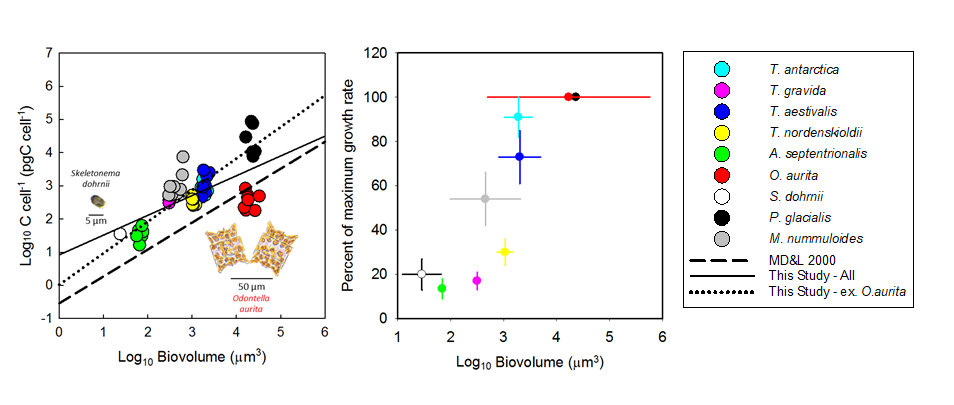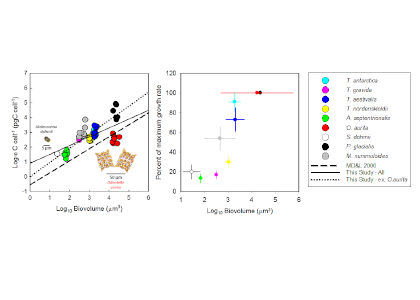Large diatoms are common in polar phytoplankton blooms, contributing significantly to food webs and carbon export, but relatively little is known about their elemental biogeochemistry. A recent study in Frontiers in Marine Science showed that the size-dependent increase in cell nutrient content for polar diatoms was similar to published values for temperate diatoms, whereas the elemental density (mass per unit volume) of polar diatoms was substantially greater for all elements measured (carbon, nitrogen, silicon and phosphorus). Furthermore, at near freezing culture temperatures, there was a positive relationship between diatom size and realized growth rates near their theoretical maximum (Figure 1). Because of the differences in elemental density between carbon and silica, these diatoms exhibited particulate C:Si ratios that are commonly interpreted as a sign of iron limitation; yet these cultures were trace metal-replete. The observed elemental composition differences suggest that it may be important for polar biogeochemical models to include different representations of diatom biogeochemistry by accounting for the functions of size and near freezing temperature.

Figure 1. Left: Cellular carbon content for polar diatoms across four orders of magnitude in biovolume compared to the same relationship for a wide range of non-polar diatoms (MD&L = Menden-Deuer & Lessard, 2000). The y-intercept is the estimate of the baseline carbon density in these polar diatoms, and is significantly higher than the literature values reviewed in MD&L (2000). Right: Growth rate of the same polar diatoms expressed as a percent of their calculated maximum growth rate at 2°C. Error bars represent the range of values observed in the experiments. Maximum growth rate was estimated by 1) applying the growth rate/biovolume relationships published by Chisholm (1992) and Edwards et al. (2012) to the observed biovolume for each culture, and 2) scaling this growth rate to 2°C growth temperature using the relationship of Eppley (1972).
Authors:
Michael Lomas (Bigelow Laboratory for Ocean Sciences)
Steven Baer (Maine Maritime Academy)
Sydney Acton (Dauphin Island Sea Lab)
Jeffrey Krause (Dauphin Island Sea Lab and University of South Alabama)




